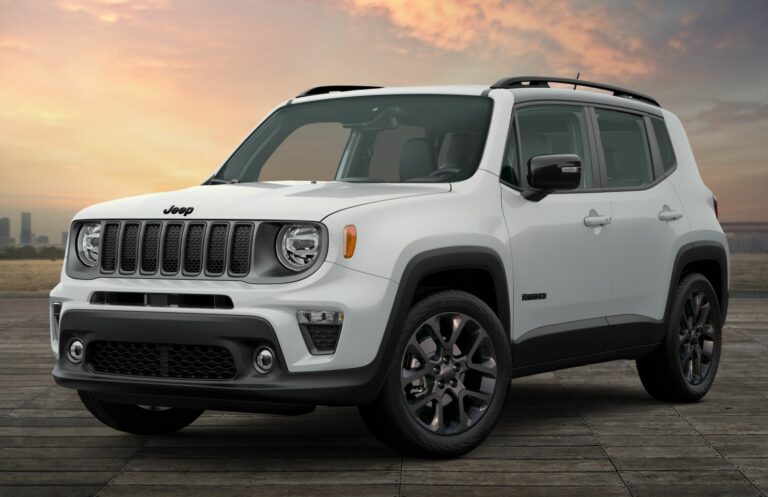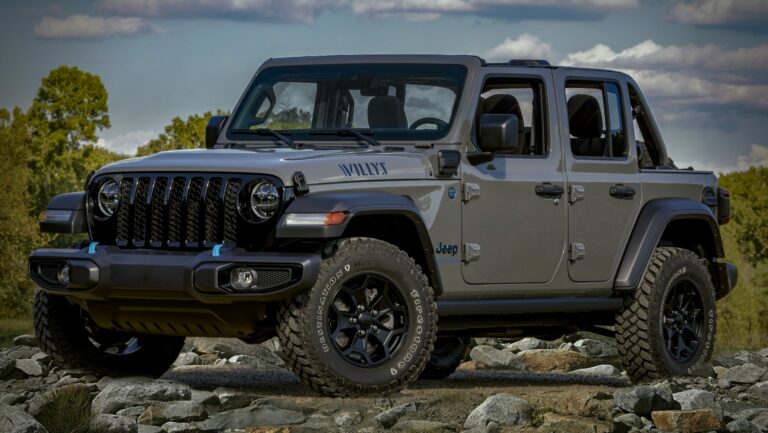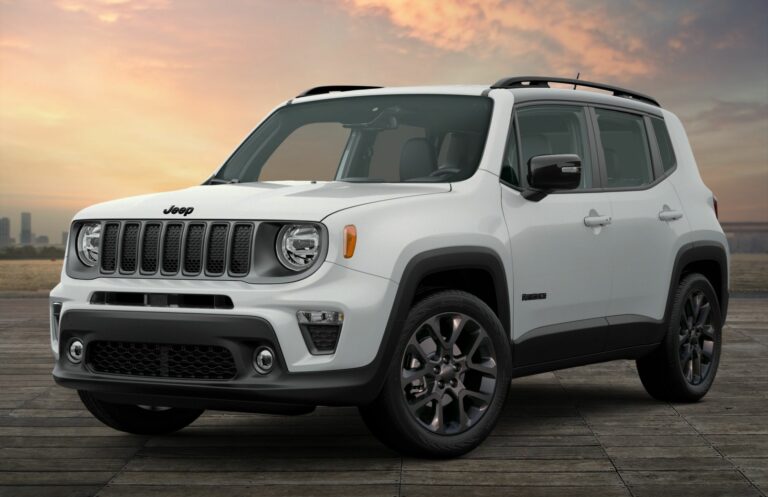How Much Oil Does A 2018 Jeep Wrangler Take? A Comprehensive Guide
How Much Oil Does A 2018 Jeep Wrangler Take? A Comprehensive Guide jeeps.truckstrend.com
The 2018 model year holds a unique place in the storied history of the Jeep Wrangler. It marked a significant transition, with both the outgoing JK generation and the brand-new JL generation being sold simultaneously. This means that when asking "How much oil does a 2018 Jeep Wrangler take?", the answer isn’t a simple one-size-fits-all. It depends entirely on which 2018 Wrangler you own – the classic JK or the redesigned JL – and, specifically for the JL, which engine it’s equipped with.
Understanding your Jeep’s specific oil capacity and type is not just about following instructions; it’s about safeguarding the heart of your vehicle: its engine. The right amount and type of oil ensure proper lubrication, heat dissipation, and protection against wear and tear, directly impacting your Wrangler’s performance, longevity, and reliability on and off the road. This comprehensive guide will delve into the specifics, providing you with all the information you need to properly maintain your 2018 Jeep Wrangler’s engine.
How Much Oil Does A 2018 Jeep Wrangler Take? A Comprehensive Guide
Decoding the 2018 Jeep Wrangler: JK vs. JL and Engine Variants
To determine the correct oil capacity, the first step is to identify your specific 2018 Jeep Wrangler model and its engine.
1. 2018 Jeep Wrangler JK (Last of the Prior Generation):
- Engine: 3.6L Pentastar V6
- Oil Capacity: 6 Quarts (5.7 Liters)
- Recommended Oil Type: Full Synthetic 5W-20, meeting Chrysler Material Standard MS-6395.

2. 2018 Jeep Wrangler JL (First of the New Generation):
The JL generation introduced two engine options for 2018:
- 3.6L Pentastar V6:
- Oil Capacity: 6 Quarts (5.7 Liters)
- Recommended Oil Type: Full Synthetic 0W-20, meeting Chrysler Material Standard MS-6395. (Note the change in viscosity from the JK’s 3.6L).

- 2.0L Turbocharged I4 (eTorque):
- Oil Capacity: 5 Quarts (4.7 Liters)
- Recommended Oil Type: Full Synthetic 5W-30, meeting Chrysler Material Standard MS-13340.

Key Takeaway: Always consult your owner’s manual for the most accurate and up-to-date specifications for your specific vehicle. The information provided here is generally applicable but manufacturer specifications can sometimes have minor revisions.
Why Correct Oil Capacity and Type Matter
The seemingly simple act of pouring oil into your engine is critical for its health.
- Underfilling: Running your engine with insufficient oil is a recipe for disaster. Low oil levels can lead to:
- Insufficient Lubrication: Components rub against each other without adequate oil film, causing excessive friction and heat.
- Increased Wear and Tear: Accelerated damage to bearings, camshafts, and other critical parts.
- Overheating: Oil helps dissipate heat. Less oil means less heat removal, leading to higher engine temperatures.
- Catastrophic Engine Failure: Prolonged low oil can seize the engine, requiring costly repairs or replacement.
- Overfilling: While less common, putting too much oil in your engine is also detrimental:
- Aeration (Foaming): The crankshaft can churn the excess oil, introducing air bubbles. Aerated oil doesn’t lubricate effectively.
- Increased Pressure: Excess oil can create pressure, leading to blown seals and gaskets, resulting in oil leaks.
- Catalytic Converter Damage: Excess oil can get into the PCV system, leading to oil consumption and potentially fouling spark plugs or damaging the catalytic converter.
- Reduced Fuel Economy: Increased drag on the crankshaft can slightly reduce fuel efficiency.
- Wrong Oil Type/Viscosity: Using the incorrect oil type (e.g., conventional instead of synthetic when synthetic is required) or viscosity (e.g., 10W-30 instead of 5W-20) can compromise lubrication, especially in extreme temperatures, and may not meet the specific additive package requirements for your engine. This can void your warranty and lead to premature engine wear.
Choosing the Right Oil: Beyond Just the Quarts
Modern engines, including those in the 2018 Jeep Wrangler, are designed with specific oil requirements.
- Full Synthetic Oil: Both the JK and JL Wranglers require full synthetic oil. Synthetic oils offer superior protection, better flow in cold temperatures, and greater resistance to breakdown under high heat compared to conventional oils.
- Viscosity Grade (e.g., 5W-20, 0W-20, 5W-30): This number indicates the oil’s thickness at different temperatures.
- The "W" stands for "Winter" and the first number (e.g., 0W, 5W) indicates the oil’s viscosity at cold temperatures. A lower number means better flow when starting a cold engine.
- The second number (e.g., 20, 30) indicates the oil’s viscosity at normal operating temperatures.
- Always use the viscosity recommended by Jeep for your specific engine.
- API Certification (American Petroleum Institute): Look for the "starburst" symbol on the oil container, indicating it meets the latest API standards (e.g., API SN, SP). This ensures the oil has been tested and meets industry performance and quality requirements.
- Chrysler Material Standard (e.g., MS-6395, MS-13340): This is a critical specification for Jeep vehicles. It indicates that the oil meets Chrysler’s specific internal testing and performance criteria. Using an oil that explicitly states it meets the relevant MS standard for your engine is paramount for warranty compliance and optimal engine protection.
How to Check Your Jeep Wrangler’s Engine Oil
Regularly checking your oil level is a simple yet crucial maintenance step.
- Park on Level Ground: Ensure your Jeep is on a flat surface to get an accurate reading.
- Engine Off and Cooled: For the most accurate reading, check the oil after the engine has been off for at least 15-20 minutes (or overnight) to allow all the oil to drain back into the oil pan. If checking when warm, wait at least 5-10 minutes after turning off the engine.
- Locate the Dipstick: In most Wranglers, the dipstick handle is yellow or orange and easily accessible on the engine.
- Remove and Wipe: Pull the dipstick out completely and wipe it clean with a lint-free cloth or paper towel.
- Reinsert Fully: Push the dipstick back into its tube until it’s fully seated.
- Remove and Read: Pull the dipstick out again and observe the oil level. There will typically be two marks (dots, lines, or a cross-hatched area) indicating the acceptable oil level range. The oil level should fall within this range.
- Top Off if Necessary: If the oil level is below the "add" or lower mark, add oil in small increments (e.g., half a quart at a time), rechecking after each addition until the level is within the safe range. Do not overfill.
- Secure: Replace the dipstick firmly when done.
Practical Advice: Check your oil at least once a month, or before long road trips, to catch any potential leaks or consumption early.
The Oil Change Process: Ensuring Correct Capacity is Met
While this guide focuses on capacity, understanding the context of an oil change is important.
- Gather Supplies: New oil (correct type and capacity), new oil filter, drain pan, wrench for drain plug, oil filter wrench, funnel, rags.
- Warm Up Engine (Slightly): A slightly warm engine allows the oil to drain more easily, but don’t make it hot.
- Lift and Secure: Safely lift the front of the vehicle using a jack and secure it with jack stands. Never work under a vehicle supported only by a jack.
- Locate Drain Plug and Oil Filter: The oil pan drain plug is usually at the bottom of the oil pan. The oil filter location varies by engine (e.g., canister type on the 3.6L Pentastar, cartridge type on the 2.0L Turbo).
- Drain Oil: Place the drain pan underneath, remove the drain plug, and allow all the old oil to drain completely.
- Replace Filter: Remove the old oil filter. Apply a thin coat of new oil to the rubber gasket of the new filter before installing it. Tighten the new filter by hand until snug, then an additional quarter to half turn (consult filter instructions).
- Replace Drain Plug: Reinstall the drain plug with a new washer (if specified) and tighten it to the manufacturer’s torque specifications. Do not overtighten.
- Add New Oil: Using a funnel, slowly pour the recommended amount of new oil (based on your engine’s capacity) into the engine’s oil fill cap.
- Check Level: After adding all the oil, wait a few minutes for it to settle, then check the dipstick. Start the engine briefly to circulate the oil, then shut it off, wait again, and recheck the level, topping off if necessary.
- Dispose of Old Oil: Properly dispose of the used oil at a recycling center or auto parts store.
Oil Change Intervals and Best Practices
Jeep generally recommends an oil change every 10,000 miles (16,000 km) or 12 months, whichever comes first, for the 2018 Wrangler. However, this interval can vary based on driving conditions and your vehicle’s Oil Change Indicator System.
- Severe Duty: If you frequently drive in dusty conditions, tow heavy loads, drive mostly short trips, or idle extensively, your oil change interval may be shorter (e.g., every 4,000-5,000 miles or 6 months).
- Oil Change Indicator System: Your Wrangler is equipped with an intelligent system that monitors driving conditions and engine parameters to determine the optimal oil change interval. When the "Oil Change Required" message illuminates, it’s time for a change.
- Always Change the Oil Filter: Never skip replacing the oil filter during an oil change. A dirty filter can restrict oil flow and reduce the effectiveness of new oil.
Estimated Costs for a 2018 Jeep Wrangler Oil Change
The cost of an oil change can vary significantly based on whether you do it yourself (DIY) or have it professionally done, and the specific oil and filter chosen.
| Component / Service Type | 2018 JK 3.6L V6 (6 Quarts 5W-20) | 2018 JL 3.6L V6 (6 Quarts 0W-20) | 2018 JL 2.0L Turbo I4 (5 Quarts 5W-30) |
|---|---|---|---|
| DIY Materials (Estimated) | |||
| Full Synthetic Oil (per quart) | $8 – $12 | $8 – $12 | $8 – $12 |
| Oil Filter (OEM/High Quality) | $10 – $20 | $10 – $20 | $15 – $30 |
| Drain Plug Washer (Optional) | $1 – $3 | $1 – $3 | $1 – $3 |
| Estimated Total DIY Material Cost | $58 – $95 | $58 – $95 | $56 – $88 |
| Professional Service (Estimated) | |||
| Basic Oil Change (Quick Lube) | $60 – $90 | $60 – $90 | $70 – $100 |
| Dealership Oil Change | $80 – $120 | $80 – $120 | $90 – $130 |
| Premium/Full Service Oil Change | $100 – $150+ | $100 – $150+ | $110 – $160+ |
Note: Prices are estimates and can vary significantly based on brand, location, sales, and labor rates. Dealerships often use OEM parts and higher-quality oil, contributing to higher costs.
Frequently Asked Questions (FAQ)
Q1: Can I use conventional oil in my 2018 Jeep Wrangler?
A1: No. Both the JK and JL 2018 Wranglers are designed for and require full synthetic oil. Using conventional oil can lead to premature engine wear and may void your warranty.
Q2: What happens if I put too much oil in my Jeep Wrangler?
A2: Overfilling can cause the crankshaft to aerate (foam) the oil, reducing its lubricating properties. It can also create excessive pressure, potentially leading to blown seals, gaskets, and oil leaks, as well as damage to the catalytic converter.
Q3: How often should I check my oil level?
A3: It’s recommended to check your oil level at least once a month, or before long trips. This helps you monitor for any consumption or leaks between scheduled oil changes.
Q4: Do I need a special oil filter for my 2018 Jeep Wrangler?
A4: Yes, always use an oil filter designed for your specific engine (3.6L Pentastar or 2.0L Turbo) and model year. High-quality aftermarket filters or OEM filters are recommended to ensure proper filtration and flow. The 3.6L typically uses a cartridge-style filter, while the 2.0L also uses a cartridge filter.
Q5: My oil change indicator light came on, but I just had the oil changed. What should I do?
A5: The oil change indicator needs to be reset after each oil change. This is typically done through a sequence of steps using the ignition and accelerator pedal, or via the infotainment system. Consult your owner’s manual for the specific reset procedure for your model.
Conclusion
Understanding "How much oil does a 2018 Jeep Wrangler take" is more than just knowing a number; it’s about appreciating the nuances of your specific vehicle’s engine requirements. Whether you own a JK or a JL, with a 3.6L V6 or a 2.0L Turbo, adhering to the correct oil capacity, type, and change intervals is paramount for your Wrangler’s long-term health and performance. By taking a proactive approach to oil maintenance, you’ll ensure your iconic off-roader remains reliable, efficient, and ready for whatever adventure lies ahead, extending its life and preserving its value for years to come.




